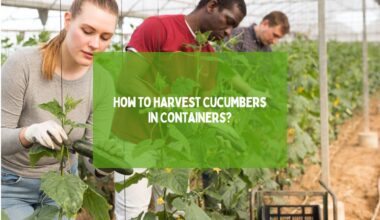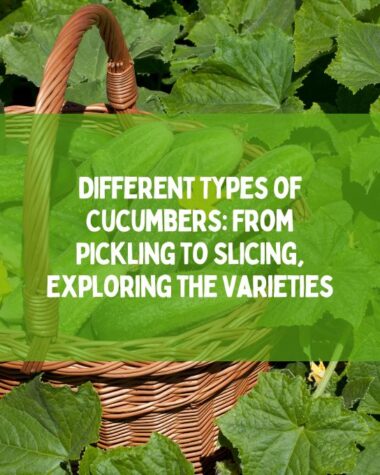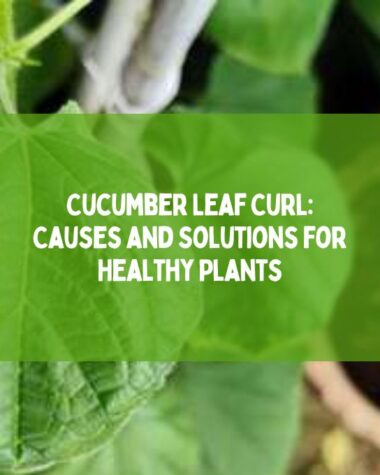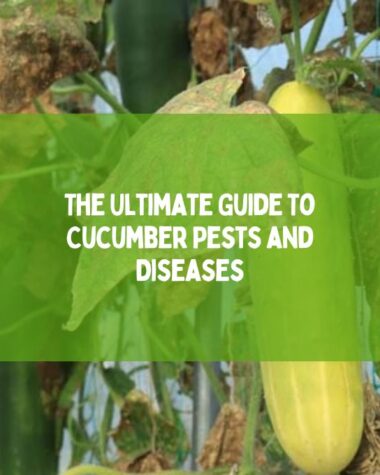To successfully grow cucumbers on a trellis, choose a sturdy trellis and plant cucumber seeds about 6 inches away from it. Train the vines onto the trellis as they grow and provide support for heavy fruits. Water regularly and fertilize every 2-3 weeks.
Cucumbers are a popular vegetable that can be grown in the garden. However, growing cucumbers on a trellis can be a game-changer for a vegetable garden. However, it maximizes space utilization and facilitates cucumber harvesting.
In this article, I will discuss the benefits of growing cucumbers on a trellis and provide some tips on how to do it successfully.
Step-by-step guide How to Successfully Grow Cucumbers on a Trellis?
Growing cucumbers on a trellis is a great way to save space in your garden and increase your yield. Not only does it allow for better air circulation and sunlight exposure, but it also helps keep the fruits clean and makes harvesting easier.
However, if you’re new to gardening or haven’t tried growing cucumbers on a trellis before, it can be a bit overwhelming.
That’s why we’ve put together this step-by-step guide to help you successfully grow cucumbers on a trellis.
From choosing the right trellis to caring for your plants, I’ll cover everything you need to know to have a bountiful cucumber harvest.
So grab your gardening gloves and let’s get started!
Step 1. Choosing the Right Trellis
Now, I will discuss how to choose the right trellis. Because choosing the right trellis is one of the most important steps in making a healthy, thriving garden
When choosing a trellis for your cucumber plants, there are several factors to consider.
Here are 2 things that you should consider for this point.
Types of Trellises
There are several types of trellises to choose from. The most common types of frames for cucumbers are A-frame trellises, T-shaped trellises, and cattle panel trellises.
- A-Frame Trellis: A-frame trellises are made up of two panels that are connected at the top, creating an A-shape. This type of trellis is easy to make and is suitable for small gardens.
- T-Shaped Trellis: T-shaped trellises are made up of two posts that are connected by a crossbar. The vines grow up the posts and along the crossbar, creating a T-shape.
- Cattle Panel Trellis: Cattle panel trellises are made of metal panels that are supported by posts. This type of trellis is sturdy and supports heavy vines.
Materials for Trellis
The materials used to make the trellis will depend on the type of trellis you choose.
- Bamboo is a popular choice for making trellises. It is lightweight, inexpensive, and easy to work with.
- PVC is another popular material for making trellises. It is durable, easy to work with, and relatively inexpensive.
- Metal trellises are sturdy and long-lasting. They are ideal for supporting heavy vines.
Step 2. Preparing the Soil for Planting
The next step is to prepare the soil for trellises. Healthy soil is the key to gardening success, and the best way to get it is to properly prepare the soil before planting.
Soil Testing
The first step in preparing the soil is to test it to determine its pH level and nutrient content. Cucumber plants prefer soil with a pH level between 6.0 and 7.0.
Soil Amendments
If the soil test indicates that the soil is deficient in nutrients, it is essential to add amendments to improve the soil quality. Compost, aged manure, and bone meal are excellent organic soil amendments that can be added to the soil to improve its nutrient content.
Soil Preparation
Once the soil has been tested and amended, it is time to prepare the soil for planting. The soil should be loosened to a depth of at least 12 inches and then raked smooth.
Step 3. Planting Cucumber Seeds or Seedlings
Now, it’s time to seed the cucumber. With the right preparation and technique, anyone can grow these delicious and nutritious vegetables in their backyard.
Once the soil has been prepared, it is time to plant your cucumber seeds or seedlings.
Plants prefer warm weather, so it is best to wait until the soil temperature reaches at least 60°F before planting. Planting can be done in the spring or early summer.
Seed Planting
To plant cucumber seeds, make a hole in the soil that is deep enough to accommodate the root ball of the seedling. Drop the seed into the hole and cover it with soil. Space the seedlings about 12 inches apart.
Step 4. Training Cucumber Vines On the Trellis
Once the cucumber plants begin to grow, it is time to start training the vines on the trellis.
Tying Vines to Trellis
As the vines grow, they will need to be tied to the trellis to keep them upright. Garden twine or soft cloth can be used to tie the vines to the trellis.
Pruning the Vines
Pruning is an essential part of training cucumber vines on a trellis. As the vines grow, they will produce side shoots that need to be pruned to prevent the plant from becoming too bushy.
Step 5. Caring for Cucumber
Cucumbers are not only delicious but also easy to grow, and with proper care, you can enjoy a bountiful harvest of fresh cucumbers all summer long.
Plants on the Trellis Proper care is essential for growing healthy cucumber plants on a trellis.
- Watering: Cucumber plants require consistent watering. The soil should be kept moist but not waterlogged. A drip irrigation system is a great way to make sure that the plants always have enough water.
- Fertilizing: Cucumber plants require regular fertilization to produce healthy fruit. A balanced fertilizer should be applied every 2-3 weeks.
- Pests and Diseases: Cucumber plants can be susceptible to pests and diseases. Regular monitoring of the plants is essential to catch any problems early. Insecticidal soap and neem oil can be used to control pests, while copper fungicides can be used to control diseases.
Related Reading:
The Benefits of Growing Cucumbers on a Trellis
Growing cucumbers on a trellis have several advantages that make it an excellent choice for home gardeners.
Space Utilization
Space utilization is one of the biggest benefits of growing cucumbers on a trellis. Cucumber plants can take up a lot of space in the garden, but when grown vertically, they take up much less space. This allows gardeners to grow more plants in a smaller area, making the most available space.
Better Air Circulation
Another advantage of growing cucumbers on a trellis is better air circulation. When cucumbers are grown on the ground, the leaves can become damp and prone to diseases. However, when grown vertically, the leaves have a better airflow, which reduces the risk of diseases.
Easier Harvesting
Growing cucumbers on a trellis make harvesting easier. When the plants are grown vertically, the cucumbers are easier to see and reach, reducing the risk of damaging the vines when harvesting.
Pest and Disease Control
Growing cucumbers on a trellis can also help with pest and disease control. The vines are off the ground, making them less attractive to pests and reducing the risk of soil-borne diseases.
Conclusion
Growing cucumbers on a trellis is a great way to make the most of the space in your garden, make it easier to pick the cucumbers, and lower the risk of pests and diseases.
To grow healthy cucumber plants on a trellis, you need to choose the right trellis, get the soil ready, and give the plants the right care. By following the tips outlined in this blog post, you can successfully grow cucumbers on a trellis and enjoy a bountiful harvest.
Thanks for reading, and I hope these tips help you cultivate healthy and abundant cucumber plants in your garden!







